Kirk Cousins is the straw that stirs this free agent class’s drink. Here’s an interesting wrinkle for the 35-year-old, four-time Pro Bowler: The two presumed primary players in his sweepstakes are led by the coordinators from the 2021 Super Bowl–winning Los Angeles Rams.
In one corner, you have Sean McVay’s offensive coordinator from that year, and Cousins’s play-caller of the past two seasons: Minnesota Vikings coach Kevin O’Connell. In the other, you have the former defensive coordinator, who was also in Washington for Cousins’s first three NFL seasons: Atlanta Falcons coach Raheem Morris. And if there’s one lesson anyone can take from that Rams title season, it’d probably be to never be afraid to take a big swing on a quarterback.
So how big a swing will these two take on Cousins?
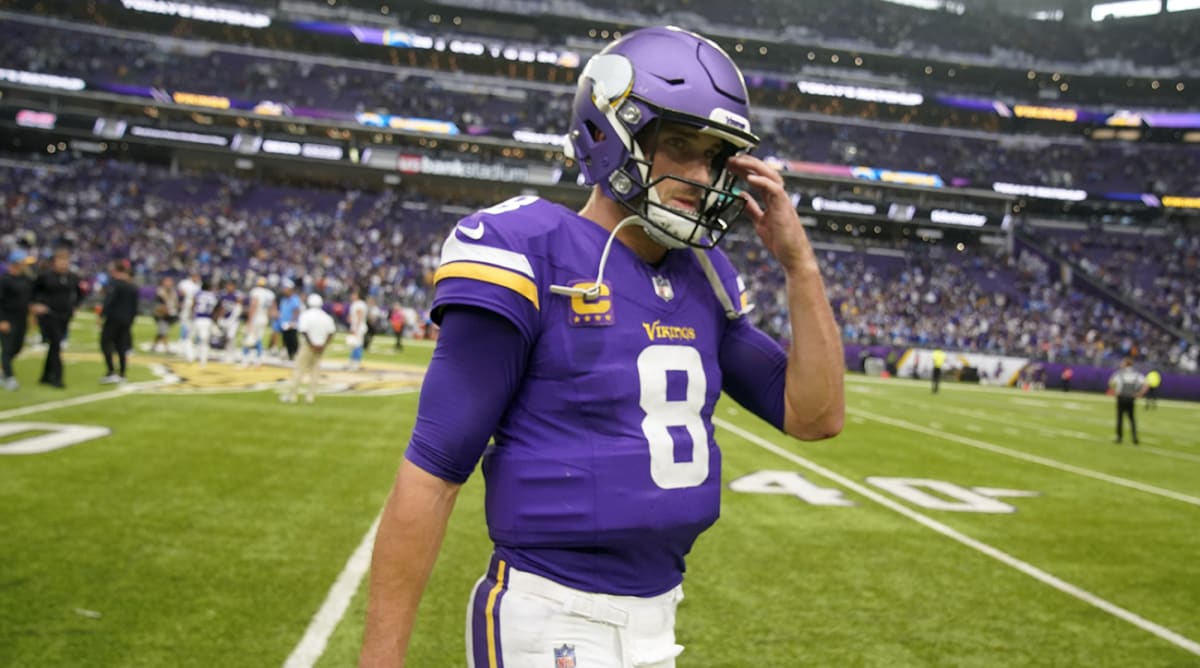
Abbie Parr/AP
The fact that Minnesota’s in the position to lose Cousins in the coming hours shows that the Vikings have set boundaries on that. A year ago, the team was unwilling to guarantee money more than two years out—which meant, at the time, past 2024—and communicated to the quarterback’s camp that, as much as Minnesota likes Cousins, it wasn’t going to do a third deal that was (essentially, in the case of the second deal) fully guaranteed over three years.
[ 2024 NFL Free Agency: Latest News & Analysis ]
That said, I feel strongly that O’Connell wants to do all he can to hang on to Cousins. The coach’s offense is at its best when it’s leveraged by a quarterback who has a coordinator’s command at the line of scrimmage—something made plainly evident in O’Connell’s year with Matthew Stafford in Los Angeles. That it’s come to the point where Cousins will hit the market, to me, means that O’Connell’s relationship with the quarterback will be important as the decision is finalized.
As for the Falcons, they’re lurking as the team expected to be most aggressive in going after outside veteran options at quarterback. I’d expect a spirited run at Cousins, particularly with Baker Mayfield off the market. They have the space to work with, and an attractive situation to lure Cousins. And if they strike out there, I think a trade with Chicago for Justin Fields could be in play.
My guess would be all this lands Cousins in the $40 million per year range—with the guarantee structure being an important factor since that’s really the only way a team can show him that he’ll be the starting quarterback for more than just a bridge year or two.
The Vikings’ situation is fascinating in that what happens with Cousins could dictate a few other moves. One of Minnesota’s best players—Danielle Hunter, who is still just 29 years old as he heads into his 10th NFL season—is also among the best players on the free-agent market. And the Vikings have been seen as a potential player in the L’Jarius Sneed trade sweepstakes. Being an aggressor on either front would mean taking a win-now stance.
Is that where the Vikings are at?
If Cousins returns, the answer to that question would be yes. They navigated the cap reset year of 2023, and somehow, even with Cousins out, stayed in the playoff race until Christmas. Between Justin Jefferson, Christian Darrisaw and Jordan Addison, they’ve got some solid building blocks. Pair top-10 quarterback play with that core, plus a couple hits in free agency and the draft, and you get an NFC contender.
The Vikings have already called the Kansas City Chiefs on Sneed, and Minnesota could take the next steps if the quarterback situation turns in its favor. And, at least on paper, the idea of returning would be more enticing for Hunter in that circumstance, too.
The alternative isn’t as pretty. Say, for example, Cousins goes to Atlanta and the Vikings wind up with Sam Darnold. Sure, Darnold could be this year’s version of Mayfield—the 2018 No. 3 pick did look better last year in limited action with the San Francisco 49ers—but if that’s the play, it’s harder to justify being Daddy Warbucks on the free-agent trail.
Also, in that case, a trade up from No. 11 for a quarterback would seemingly be on the radar, so the Vikings would likely want to hold on to the draft capital that it would take to pry the franchised Sneed from the Chiefs.
So Minnesota has an interesting couple of days ahead.
The Steelers’ signing of Russell Wilson is, in so many ways, the needs of a team and a player lining up to create a fit. If this is two years ago, I don’t think Pittsburgh does this, nor would it have worked if the Steelers were picking in the top three and readying to draft a quarterback this year.
That’s because you have to project a lot of things to be comfortable having Wilson in a position group with a prized rookie.
But that’s not where the Steelers are. Kenny Pickett’s not a rookie anymore. He played well enough when he was one, then had an uneven second year—to the point where Mason Rudolph (you may have needed a reminder he was still on the team) outplayed him and gave Pittsburgh a spark down the stretch. As a result, the kid gloves are off with Pickett now, and for good.
As such, the time is right to put competition, not a nurturing environment, in that room. And bringing Wilson in means adding a player with Super Bowl bona fides to the group. He won’t be arriving to mentor Pickett. He’s going there to try and win the job, and that should help the Steelers get their answer on their 2022 first-round pick faster.
As for Wilson’s side of it, this really might be his last shot. That the 35-year-old is going to a place where he’s not going to be enabled, or treated like the franchise, gives him an opportunity to show he’s grown from the experience in Denver—where he was first treated like royalty, then knocked down a peg or two (or 10) by Sean Payton—and is ready to, well, be a regular guy. Which might be easier said than done.
Either way, at the end of all of it, the Steelers will get an answer on Pickett, the rest of us will have an answer on Wilson, and Wilson’s career will either be revived or over.
Should be fun to watch.
The Chiefs did right by Chris Jones. And it’s worth noting that Jones got the Chiefs there by continually betting on himself.
To understand that fully, you have to go back to last summer. Jones carried his holdout into the season, rather than playing out the final year of the four-year, $80 million deal he signed in 2020. It was a contract that had very clearly aged out as Jones maintained his All-Pro level of play. Jones came back by agreeing to an incentive sweetener for 2023 and taking the leap of faith that all of this would be resolved after the season.
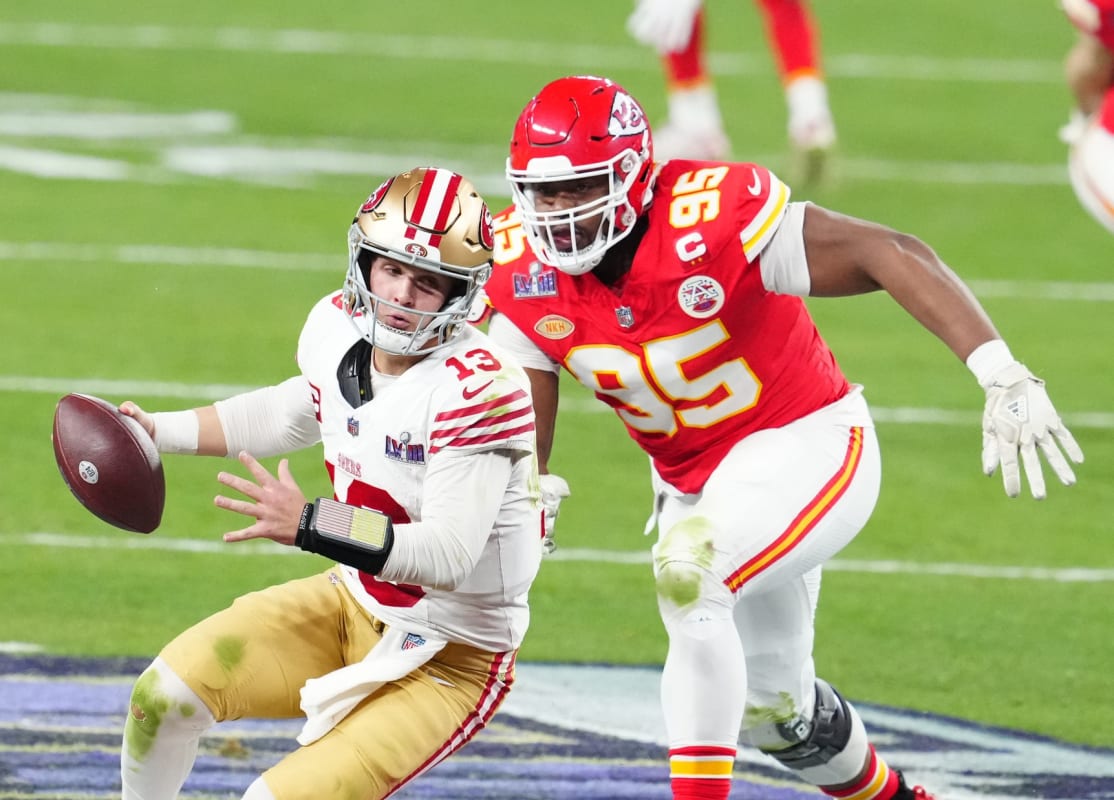
Stephen R. Sylvanie/USA TODAY Sports
Jones’s incentive package this past season called for …
• $1 million for playing 35% of the Chiefs’ defensive snaps, and another $1 million for playing 50%.
• Leaving a $1.25 million 10-sack incentive intact and pushing the number to $1.75 million if he hit 15 sacks.
• $1 million if he made first-team All-Pro and the Chiefs made it to the Super Bowl, and another $2 million if he was named Defensive Player of the Year and the Chiefs won it all.
Jones hit all but the 15-sack and DPOY-championship incentives, meaning he took home $4.25 million in incentives ($3 million of which weren’t part of his old deal). That got him past the $2.1 million in fines he incurred in missing camp and set the stage for the negotiation that unfolded over the past month.
In this case—and I was critical over the summer of the approach—Jones and his agents, the Katz brothers, did the right thing, gambling that the All-Pro would be, well, his All-Pro self in 2023. That positioned them to get what they wanted with a $32.16 million tag number looming months later. And they were right.
Jones landed $95 million over the first three years of the five-year deal he agreed to Saturday night, with the first two years fully guaranteed, and his money for 2026 vesting as fully guaranteed in March ’25. That gets Jones to where Aaron Donald is over the first three years of the deal the Rams’ future Hall of Famer did two years ago, plus with the early vesting third-year guarantee that Donald’s deal lacked.
And as for the Chiefs’ side of this? Well, they’re rewarding one of the great players in franchise history, and one who’s still playing at a very high level with four months to go until his 30th birthday. He’s part of the holy trinity (along with Patrick Mahomes and Travis Kelce) of the Kansas City dynasty. This is just paying the freight for it.
You could argue they should’ve done this a year ago. But this is where they are now.
And so Sneed remains on the block, and now Kansas City can move forward with some financial security for its biggest stars, knowing some of the roster’s rising stars (Creed Humphrey, Trey Smith, Trent McDuffie, George Karlaftis, Nick Bolton) will be coming to the negotiating table in the not-too-distant future.
While we mention Bolton, it’ll be interesting to see what happens with this year’s crop of free-agent linebackers. We’re covering the running back situation in The MMQB lead, and the linebackers on this year’s market are facing a similar conundrum. With a league increasingly leaning to investments at premium positions (quarterback, receiver, tackle, pass rusher, corner), and taking a we’ll-figure-it-out approach to other positions, the captains of the defense join the players running the ball as the ones taking the financial hits.
Even more interesting? The NFL’s most successful teams are stocked at linebacker. The Chiefs had three top-100 picks on rookie deals and a free agent addition in their rotation at the position. The 49ers drafted, developed and paid Fred Warner and Dre Greenlaw. The Baltimore Ravens took Patrick Queen in the first round, and traded for and paid Roquan Smith. And the Detroit Lions just spent a first-round pick on Jack Campbell.
Yet the market is clearly moving away from these players. Over the next few days, Queen’s case should be an interesting litmus test for the financial future of NFL linebackers.
Queen’s play really took off in Baltimore after Smith arrived in midseason in 2022, with the latter taking on the green dot (making him the defensive signal-caller), and freeing up the hyper-athletic former LSU star to just go run to the ball and play. The results that followed were undeniable. And so while there is that caveat—that maybe you don’t want to clutter Queen’s job up with the responsibility Smith took on—there’s also a havoc-wreaker here, too.
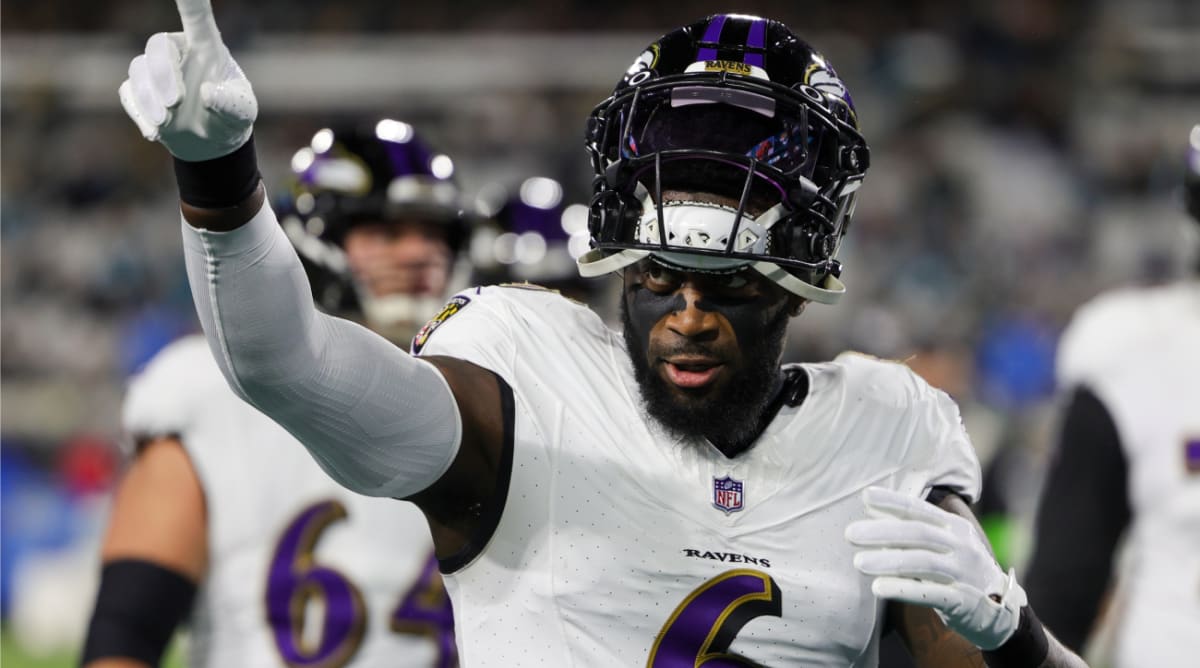
Nathan Ray Seebeck-USA TODAY Sports
Still, most of the projections I’ve seen have Queen in the $12 million per year range, well short of what the top players at his position make. That would be, presumably, an affirmation that positional value could wind up really hurting his ability to cash in after four NFL seasons.
Similarly, Drue Tranquill, re-upped this week with the Chiefs for just $19 million over three years, with $12.5 million fully guaranteed. Tranquill could’ve gotten a bit more—maybe closer to $8 million per year—elsewhere. But it’s still well short of the higher end of the off-ball linebacker market, and that’s for a really good player who was a vital piece of a Super Bowl defense.
So does Queen get paid? How about Azeez Al-Shaair, Jordyn Brooks or Frankie Luvu? If they don’t, in a year where options in the draft look sparse, it would say a lot.
While we’re there, the options at safety are stacked but might face a similar problem. This week, the Denver Broncos cut Justin Simmons loose, and the Seahawks did the same with oft-injured star Jamal Adams. They join a group with a lot of names you’d be familiar—the New York Giants’ Xavier McKinney, Washington Commanders’ Kamren Curl and New England Patriots’ Kyle Dugger.
It was less than two years ago that Derwin James reset the safety market, agreeing to a four-year, $76.5 million extension with the Chargers.
Last year, Jessie Bates III got a really solid deal ($64 million over four years) to go from the Cincinnati Bengals to Atlanta, but it fell well short of James’s contract. Arizona Cardinals star Budda Baker scratched for a raise after putting in a trade request. Minnesota’s Harrison Smith took a pay cut. Other than that, there’s been little movement atop the market.
So this shapes up to be another area of free agency where we, as a football-watching public, should get some insight into where the league is at. The Tampa Bay Buccaneers franchised Antoine Winfield Jr. at $17.123 million, and I’d guess that, between now and July, the Bucs work something out with their star. New England transition tagged Dugger at $13.815 million, and I’d bet the Patriots hammer out an agreement with Dugger, too.
After that? The fate of Curl and McKinney, in particular, is interesting to me. McKinney had the Nick Saban stamp of approval coming out of Alabama in 2020, and, as such, there were a lot of teams high on him that April. He’s been a good-not-great player in New York, but a team could double back on its draft evaluation and give him a big deal. As I asked around on free agents after the combine, Curl was one name that came up consistently as a player who’ll get more than people might think.
Both players are still 24. Both are ascending. Both are good, versatile players, the types who generally get paid this time of year.
Whether these two do—like we said with the linebackers—will say a lot.
As for the players who will get paid, I’d look to the offensive line for your answers. And this is as much about NFL economics as anything, as they relate to the franchise tag.
There’s one blanket number for offensive linemen, which essentially means if you’re going to tag a guard or a center, you’re tagging them at the tackle number. The result, from there, is similar to what you’d see if the NFL decided to group safeties with corners, or tight ends with receivers. And it’s exactly like what the flood of edge rushers tagged as linebackers has done to teams’ ability to franchise off-ball linebackers.
Simply put, a guard or a center generally isn’t worth what a tackle is, so teams don’t tag them, which winds up dumping them into the market. Add the reality that there aren’t enough offensive linemen to go around, and there should be a windfall for big men.
So if we go back to the question of which players could get paid more than people think, a lot of the feedback I’ve received is pointed toward those interior line positions. It was the Miami Dolphins’ Robert Hunt and Detroit’s Jonah Jackson at guard, and Denver’s Lloyd Cushenberry at center. Others such as New England’s Mike Onwenu (who has the flexibility to play right tackle) and Dallas’s Tyler Biadasz could benefit from the rising tide, as well.
“If Ben Powers got $13 million last year, a lot of guys should get more than that this year,” says an NFC exec, citing Powers’s four-year, $51.5 million deal in Denver.
That, again, is the NFL leaning into certain position groups and away from others.
If you’re looking for the top paid nonquarterback, give me Dolphins DT Christian Wilkins. I’ve heard Miami’s big man should easily cross the $20 million-per-year barrier and could get up around $25 million. He brings an increasingly difficult-to-find quality to the table: the ability to be a disruptive, pass-rushing force from the inside.
That, to me, begged the first question you should ask about any free agent: How was he able to get to the market in the first place?
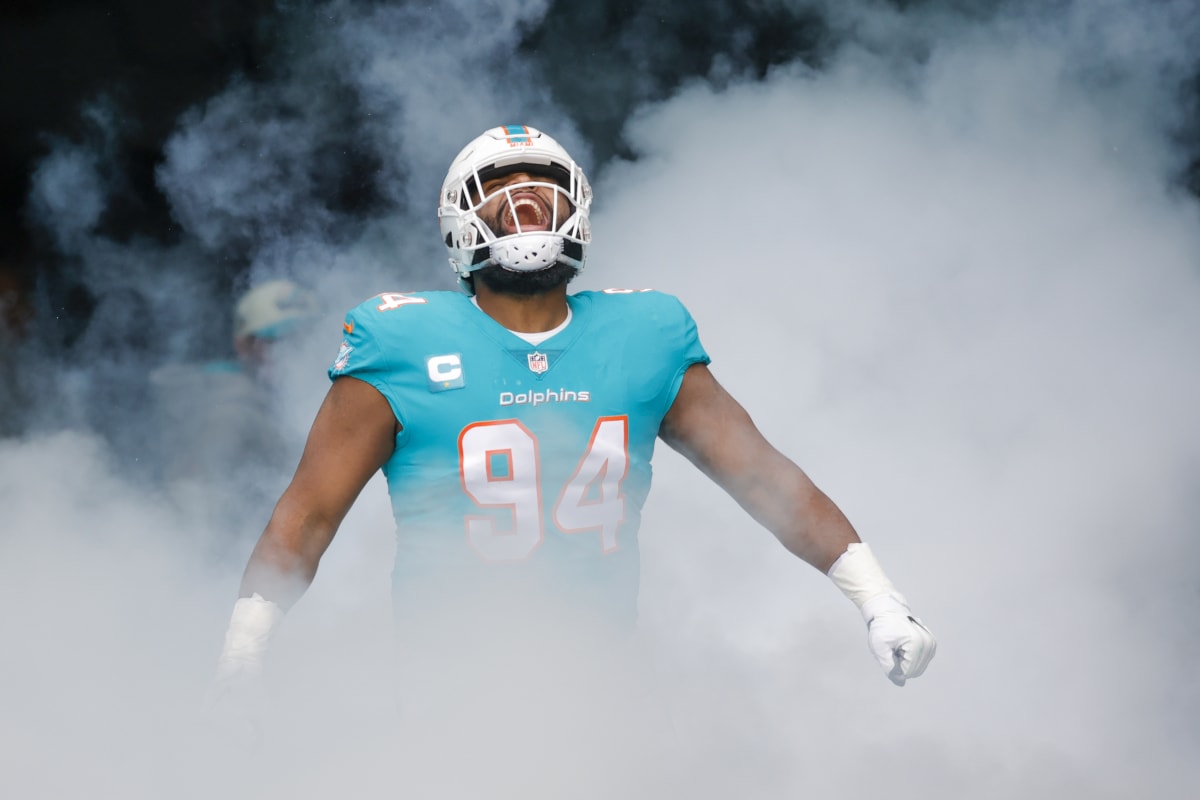
Sam Navarro/USA TODAY Sports
The first reason is straightforward. The Dolphins’ cap situation isn’t great with the second-least breathing room in the league. They’re going to have to offload vets (Xavien Howard is already on his way out); and plopping a $22.1 million lump sum on the books, in franchising Wilkins, would’ve made things much more complicated. Especially when there’s the expectation that Miami negotiates a long-term deal with Tua Tagovailoa this offseason.
The second question is how do you value Wilkins? He had a career-high nine sacks in 2023, but had never had five in a season before that. He gets displaced in the run game because he’s relatively small for the position—and he really struggled in Miami’s playoff loss against a physical Chiefs line. He also turns 29 this calendar year.
So, yes, Wilkins is a really good player. Like I said, probably the best nonquarterback on the market. But if he’s not a force in the run game—and not a Jones or a Donald or even a Justin Madubuike as a rusher—do you pay him like those players? Or does it mean it takes a certain scheme to get the most out of Wilkins, since, at 28 years old, he is what he is as a football player, and you have to work around the few flaws he has?
Anyway, I think for the right team, Wilkins could be a great signing—maybe the Cleveland Browns or Houston Texans, who I’ve heard are willing to spend on the position. But, again, I think fit will be important. The money, I’d expect, will be there.
The only team in a worse spot cap-wise than the Dolphins is the Los Angeles Chargers. And they are open to surveying their options for breaking out of their financial jail cell. Coming into Los Angeles, new coach Jim Harbaugh and GM Joe Hortiz inherited a quarterback and roster that looks pretty close to being capable of contending for a Super Bowl. But with that benefit came the aforementioned caveat that, money-wise, things need to be worked out.
So over the past week, the Chargers have engaged other teams in trade discussions on star edge rushers Joey Bosa and Khalil Mack, and stalwart receivers Keenan Allen and Mike Williams. Two of those players (Mack, Allen) are on the wrong side of 30. The other two are closing in on that milestone and have lengthy injury histories. One thing all four have in common is a cap number north of $30 million for 2024.
Mack is at $38.5 million, Bosa is at $36.6 million, Williams is at $34.7 million and Allen is at $32.5 million. Their respective cap numbers in 2023: $16.6 million, $15.8 million, $12.8 million and $13.5 million—which illustrates how the team went all in in this area in ’23. In a lot of ways, it also shows the cost of going the extra year with staffers that know their jobs are on the line.
If the Chargers were to keep those four as it stands, the collective $142.3 million bill would account for 56% of their salary cap. So, obviously, something has to give. And I don’t think that means all four players will be gone. But I’d be stunned if they were all back. I think it’d take something significant for another team to pry Allen.
The rest, I’d bet, could be had for a pretty reasonable price, for teams that don’t want to just wait for Harbaugh and Hortiz to start cutting guys.
While Bosa and Mack are pricey, and Mack is older, their availability could be easily juxtaposed against how the free-agent edge rushers are expected to be paid. I’d expect Hunter to come close to $20 million per, if he doesn’t get there. Houston’s Jonathan Greenard has a shot to hit that number, too, and I don’t think New York Jets’ dynamo Bryce Huff will be far off it when all is said and done, either.
Mack is in the late stages of his career at 33 years old, despite having 17 sacks last year. Bosa is 28 and, yes, he has an injury history, but he has also hit double-digit sacks in all four seasons he’s started 11 or more games. The former is due $23.25 million in the final year of his contract. The latter is due $22 million this year and a nonguaranteed $25.36 million next year. Both have been monsters in the past as the primary pass rusher for their teams.
Hunter has, too, but he’s a year older than Bosa. And Greenard and Huff had their big years playing offenses geared to stop star teammates of theirs.
So while, yes, it’d be expensive to take on either Mack or Bosa’s contracts, you wouldn’t be guaranteeing anything over multiple years and you’d also be getting a player who has shown he can win in the passing game, regardless of what’s around him.
Now, if I’m a young team building, then Greenard and Huff make more sense. But if I’m on the cusp, Bosa or Mack (and Hunter, too) might be the better solution.
Got your quick hitters to wrap up this pre-free agency edition. Let’s roll …
• Mayfield’s deal in Tampa is a logical one for both sides. At worst, Mayfield gets $40 million for 2024, and he’d have to be pretty shaky not to get $60 million over the next two years. (The Bucs would be paying $10 million to make the remaining $20 million go away if they bail after this year.) Presuming Mayfield makes it through ’25, the Bucs will have a $40 million decision to make on a guy about to turn 31 that March. So maybe the Bucs have their franchise quarterback answer. Even if they don’t, this buys them time to find one.
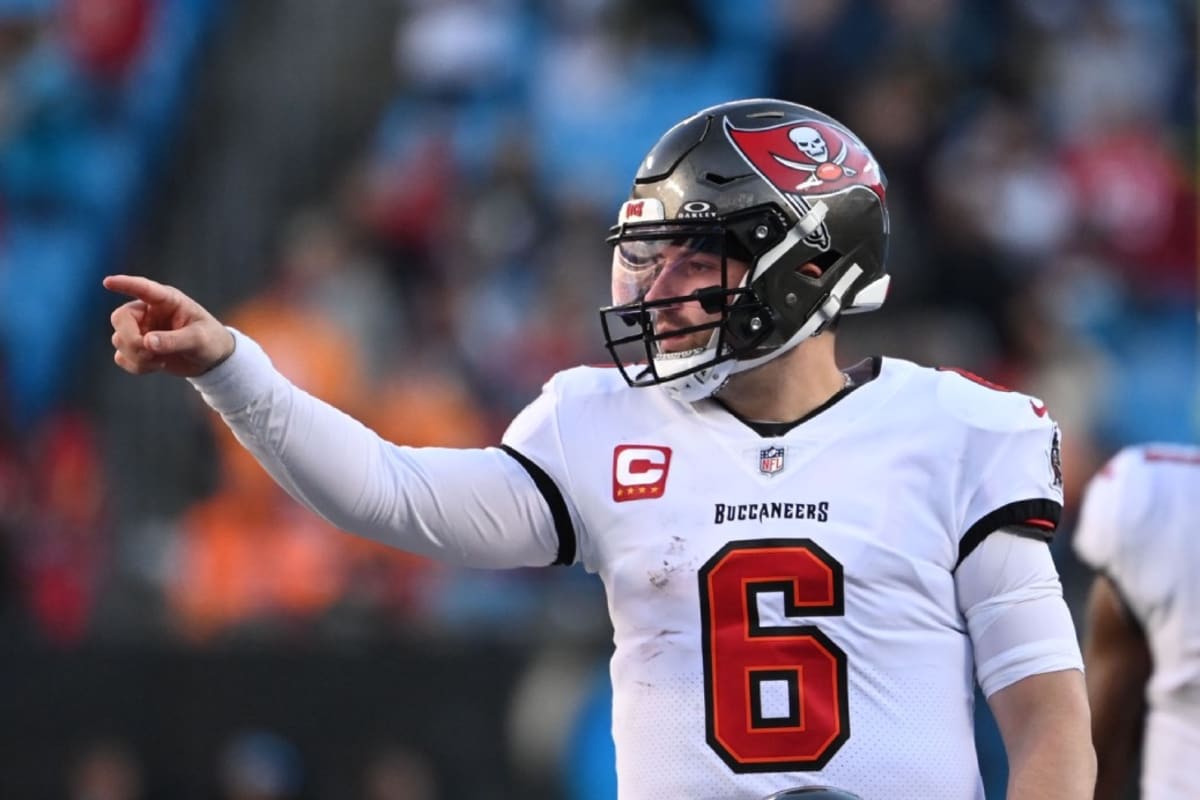
Bob Donnan-USA TODAY Sports
• Mayfield wasn’t the only headliner the Bucs kept from making it to the market. Mike Evans got done at $41 million for the next two years—a nice deal that isn’t exactly what it was initially reported to be. He’s due $23 million this year, and $18 million next year, with $6 million of his money for 2025 guaranteed at signing, and the another $6 million vesting next March. That means the Bucs will pay $29 million for a year, $41 million for two, and then will have to make a decision on Evans for ’25 at the beginning of the offseason next year.
• The Patriots told Mac Jones after the combine of their intention to trade him, and even asked the quarterback what he wanted to do. After working through that, and shopping him all week, New England found a suitor in the Jacksonville Jaguars. With a sixth-round pick in its back pocket, the Patriots fished around for a fifth Saturday, before finalizing the deal to send Jones to his hometown for the 192nd pick. The return, of course, isn’t great for a player picked 15th three years ago. But it’s reflective of the feeling that there just isn’t a ton of physical upside there in Jones.
• The deal means different things for the two teams. On the Patriots’ side, with Jerod Mayo just getting started, keeping Jones would’ve meant carrying the baggage of the past two years with him into 2024 (things got ugly in that quarterback room), which is why New England felt like a clean break would be best for everyone. For Jacksonville, Jones gives it a layer of affordable depth and, perhaps, a trade piece if there are injuries at quarterback this summer and fall like there were last year.
• The Buffalo Bills’ cap purge—which saw Tre’Davious White, Jordan Poyer, and Mitch Morse released—indeed signals the end of an era. Poyer and pending free agent Micah Hyde were signed as a tandem in 2017, just after Sean McDermott landed in Buffalo; White was the new regime’s first draft pick; and Morse arrived as a big-ticket free agent in ’19. The reality is this was going to happen sooner or later, and now, as the roster ages, is as good a time as any to hit the reset button. It’ll make this year’s draft (the Bills have 11 picks) vital and probably means relying on younger players in key spots in ’24.
• Some free agents are coming off injuries and one is Bengals defensive tackle D.J. Reader, who tore his quad in December and hit the market a few months shy of his 30th birthday. I’m told the expectation is Reader will be ready for the season opener and could be cleared for the start of training camp—though it seems like whoever signs him will probably be careful with him through the summer.
• The Browns’ trade for Jerry Jeudy makes all the sense in the world. Yes, he’s underachieved. But he’s coming to a place where he’ll play with Amari Cooper, who is a fellow South Florida native and Bama alum, and a player Jeudy has patterned his game after for years. Add that big-brother dynamic to the fact that Jeudy is in a contract year, and it’s really easy to see how Cleveland is positioned to get the best from the receiver. (The move also points to GM Andrew Berry for creativity in building his receiver room with mid-to-late-round draft capital, as Jeudy, Cooper and Elijah Moore were all acquired by trade.)
• Timing matters on trades. The Broncos insisted a year ago on a first-rounder for Jeudy and a second-rounder for Courtland Sutton before the draft. Denver didn’t get it, neither were moved at the trade deadline and the value of the two has cratered since. Jeudy going for fifth- and sixth-round picks is reflective of the fact that he had another inconsistent year, and that he now has just the fifth-year option left on his contract, meaning if he has a big year, it’s going to cost Cleveland to keep him.
• Along those lines, I think the Carolina Panthers are going to have to take a lot less for Brian Burns than the Rams offered them in 2022 (a ’23 third-rounder, and firsts in ’24 and ’25). I’m not sure how much more it’ll be, if it is more, than the second-rounder I think the Chiefs will probably get for Sneed.
• The defensive tackle market has some good players capable of being key pieces for some really good teams—with the Indianapolis Colts’ Grover Stewart, Buffalo’s DaQuan Jones and Cleveland’s Shelby Harris on that list.







